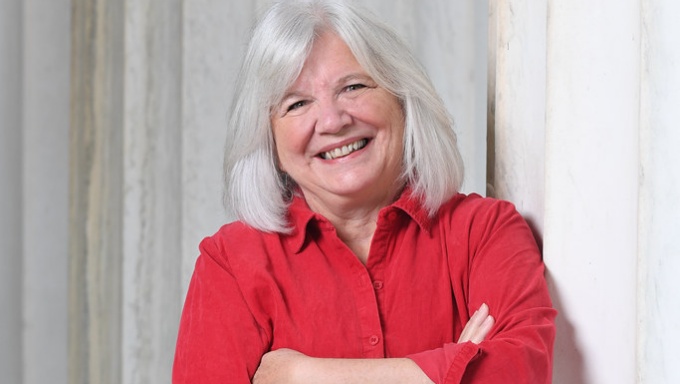
Barbra Kavanaugh: The magic of collaboration
As a lawyer, Barbra Kavanaugh ’83 knows people will often defer to her opinion. But, she says, that’s not always a good thing.
That’s why Kavanaugh continues to build on an organizing model that makes for real social change – one that brings together the expertise of community organizers, citizens and lawyers, in a collaboration she calls “movement lawyering.”
“It’s a more holistic approach that puts community organizers and lawyers on an equal footing,” says Kavanaugh, who developed the approach as executive director of the Employment Justice Center in Washington, D.C. “When organizers work with lawyers, it tends to be fairly linear. If you can’t get any traction on an issue, you go to a lawyer. But law is by nature individualistic – it’s about individual rights – and that takes the power from the community.”
When organizers work with lawyers, it tends to be fairly linear. If you can’t get any traction on an issue, you go to a lawyer. But law is by nature individualistic – it’s about individual rights – and that takes the power from the community.”
The Employment Justice Center provides direct service to primarily low-wage workers who’ve faced injustice at work, including wage theft. When Kavanaugh led the organization from 2010 to 2015, she added organizers to the legal staff. They worked together to address systemic issues as well as individual cases.
Clients were served by lawyer-organizer teams from the start, and if the complaint seemed to reflect a wider pattern of unfairness, the organization was able to mobilize workers as well as take legal action to address it. “We would take it to a meeting of organizers and lawyers,” Kavanaugh says, “and they all would bring their tools, their perspectives and their thoughts about how we could address this issue, while also making sure the workers were empowered throughout.”
This innovative model paid off in significant improvements to worker protection laws. The minimum wage was raised, incrementally, to $15 an hour; tipped workers won the right to paid sick leave; and the amount of unpaid wages that could be recovered in wage theft cases was effectively quadrupled. A workers group formed, and workers were trained to provide non-legal support to victims of workplace injustices.
Having retired from that position, Kavanaugh continues to explore ways to put movement lawyering into practice. In addition, she works as an interim executive director, focusing on the challenges faced by nonprofit organizations going through a time of leadership transition. She has served as the interim executive of several such organizations in the D.C. area, and now directs the Interim Executive Network, which consults with boards of directors, refers nonprofits to experienced executives, and is working to define the ethics and standards that govern this important work in transitional leadership.
It’s the latest chapter in Kavanaugh’s varied career, which has included work at Neighborhood Legal Services in Buffalo, tackling mostly landlord-tenant and housing discrimination cases, and a term as a member of Buffalo’s Common Council. She and her partner, Lynn Edelman, raised their two sons in Buffalo, and were the first same-sex couple in Erie County to gain a joint custody order for both children.
Her face is even on a mural in the Allentown neighborhood celebrating LGBTQ history, though Kavanaugh says her advocacy has focused more on social and racial justice. But in reality, she says, “the so-called gay agenda is a social justice agenda. Access to health care, anti-discrimination policies, the right to adopt and create families, and condemning violence against all marginalized communities are not just gay issues.”